On March 5th 1946, in one of the most famous orations of the Cold War period, former British Prime Minister Winston Churchill condemned the Soviet Union’s policies in Europe and declared, “From Stettin in the Baltic to Trieste in the Adriatic, an iron curtain has descended across the continent.” Churchill’s speech is considered one of the opening volleys announcing the beginning of the Cold War. Read More
———————————————————————————————————————————–
Berghahn presents a selection of relevant Cold War titles:
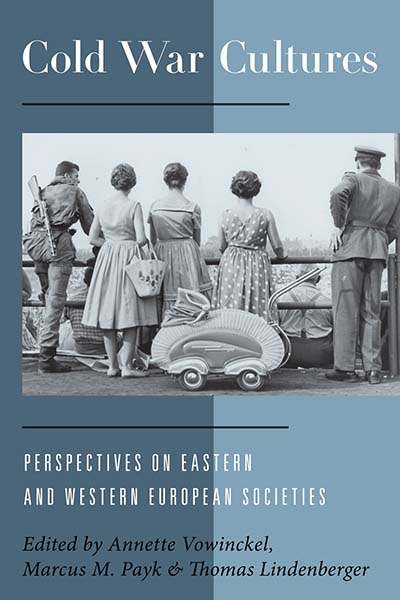 COLD WAR CULTURES
COLD WAR CULTURES
Perspectives on Eastern and Western European Societies
Edited by Annette Vowinckel, Marcus M. Payk, and Thomas Lindenberger
The Cold War was not only about the imperial ambitions of the super powers, their military strategies, and antagonistic ideologies. It was also about conflicting worldviews and their correlates in the daily life of the societies involved. The term “Cold War Culture” is often used in a broad sense to describe media influences, social practices, and symbolic representations as they shape, and are shaped by, international relations. Yet, it remains in question whether — or to what extent — the Cold War Culture model can be applied to European societies, both in the East and the West. While every European country had to adapt to the constraints imposed by the Cold War, individual development was affected by specific conditions as detailed in these chapters. This volume offers an important contribution to the international debate on this issue of the Cold War impact on everyday life by providing a better understanding of its history and legacy in Eastern and Western Europe.
 FRIENDLY ENEMIES
FRIENDLY ENEMIES
Britain and the GDR, 1949-1990
Stefan Berger and Norman LaPorte
During the Cold War, Britain had an astonishing number of contacts and connections with one of the Soviet Bloc’s most hard-line regimes: the German Democratic Republic. The left wing of the British Labour Party and the Trade Unions often had closer ties with communist East Germany than the Communist Party of Great Britain (CPGB). There were strong connections between the East German and British churches, women’s movements, and peace movements; influential conservative politicians and the Communist leadership in the GDR had working relationships; and lucrative contracts existed between business leaders in Britain and their counterparts in East Germany. Based on their extensive knowledge of the documentary sources, the authors provide the first comprehensive study of Anglo-East German relations in this surprisingly under-researched field. They examine the complex motivations underlying different political groups’ engagement with the GDR, and offer new and interesting insights into British political culture during the Cold War.
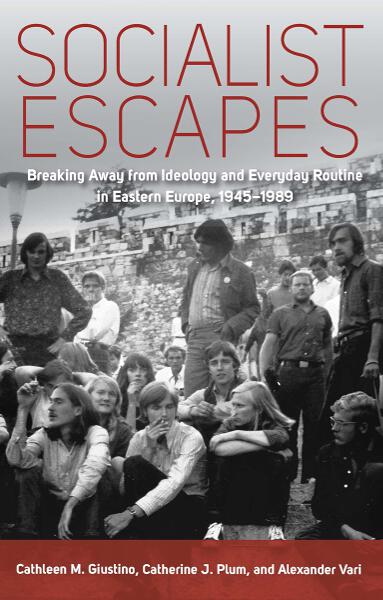 SOCIALIST ESCAPES
SOCIALIST ESCAPES
Breaking Away from Ideology and Everyday Routine in Eastern Europe, 1945-1989
Edited by Cathleen M. Giustino, Catherine J. Plum, and Alexander Vari
During much of the Cold War, physical escape from countries in the East Bloc was a near impossible act. There remained, however, possibilities for other socialist escapes, particularly time away from party ideology and the mundane routines of everyday life. The essays in this volume examine sites of socialist escapes, such as beaches, camp sites, nightclubs, concerts, castles, cars, and soccer matches. The chapters explore the effectiveness of state efforts to engineer society through leisure, entertainment, and related forms of cultural programming and consumption, as it was in leisure and tourism that the party’s intentions encountered Eigen-Sinn, the pursuit of individual interests. This volume leads to a deeper understanding of state– society relations in the East Bloc, where the state did not simply “dictate from above” and inhabitants had some opportunities to shape solidarities, identities, and meaning.
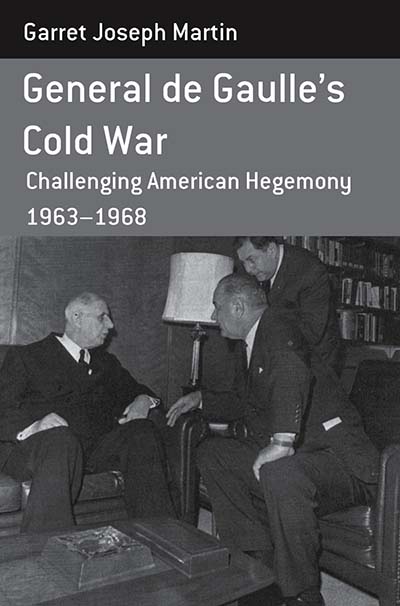 GENERAL DE GAULLE’S COLD WAR
GENERAL DE GAULLE’S COLD WAR
Challenging American Hegemony, 1963-68
Garret Joseph Martin
The greatest threat to the Western alliance in the 1960s did not come from an enemy, but from an ally. France, led by its mercurial leader General Charles de Gaulle, launched a global and comprehensive challenge to the United State’s leadership of the Free World, tackling not only the political but also the military, economic, and monetary spheres. Successive American administrations fretted about de Gaulle, whom they viewed as an irresponsible nationalist at best and a threat to their presence in Europe at worst. Based on extensive international research, this book is an original analysis of France’s ambitious grand strategy during the 1960s and why it eventually failed. De Gaulle’s failed attempt to overcome the Cold War order reveals important insights about why the bipolar international system was able to survive for so long, and why the General’s legacy remains significant to current French foreign policy.
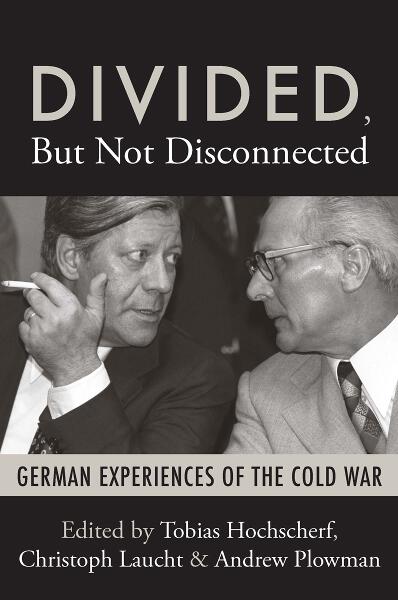 DIVIDED, BUT NOT DISCONNECTED
DIVIDED, BUT NOT DISCONNECTED
German Experiences of the Cold War
Edited by Tobias Hochscherf, Christoph Laucht, and Andrew Plowman
The Allied agreement after the Second World War did not only partition Germany, it divided the nation along the fault-lines of a new bipolar world order. This inner border made Germany a unique place to experience the Cold War, and the “German question” in this post-1945 variant remained inextricably entwined with the vicissitudes of the Cold War until its end. This volume explores how social and cultural practices in both German states between 1949 and 1989 were shaped by the existence of this inner border, putting them on opposing sides of the ideological divide between the Western and Eastern blocs, as well as stabilizing relations between them. This volume’s interdisciplinary approach addresses important intersections between history, politics, and culture, offering an important new appraisal of the German experiences of the Cold War.
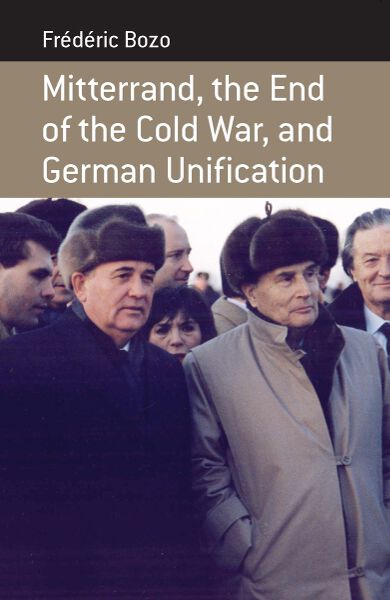 MITTERRAND, THE END OF THE COLD WAR, AND GERMAN UNIFICATION
MITTERRAND, THE END OF THE COLD WAR, AND GERMAN UNIFICATION
Frédéric Bozo
Translated from the French by Susan Emanuel
CHOICE OUTSTANDING ACADEMIC TITLE 2010
Twenty years after the fall of the Berlin Wall, this important book explores the role of France in the events leading up to the end of the Cold War and German unification. Most accounts concentrate on the role of the United States and look at these events through the bipolar prism of Soviet-American relations. Yet because of its central position in Europe and of its status as Germany’s foremost European partner, France and its President, François Mitterrand, played a decisive role in these pivotal international events: the peaceful liberation of Eastern Europe from Soviet rule starting in 1988, the fall of the Berlin Wall and Germany’s return to unity and full sovereignty in 1989/90, and the breakup of the USSR in 1991. Based on extensive research and a vast amount of archival sources, this book explores the role played by France in shaping a new European order.
BERLIN DIVIDED CITY, 1945-1989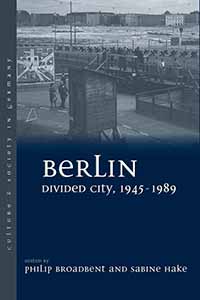
Edited by Philip Broadbent and Sabine Hake
A great deal of attention continues to focus on Berlin’s cultural and political landscape after the fall of the Berlin Wall, but as yet, no single volume looks at the divided city through an interdisciplinary analysis. This volume examines how the city was conceived, perceived, and represented during the four decades preceding reunification and thereby offers a unique perspective on divided Berlin’s identities. German historians, art historians, architectural historians, and literary and cultural studies scholars explore the divisions and antagonisms that defined East and West Berlin; and by tracing the little studied similarities and extensive exchanges that occurred despite the presence of the Berlin Wall, they present an indispensible study on the politics and culture of the Cold War.
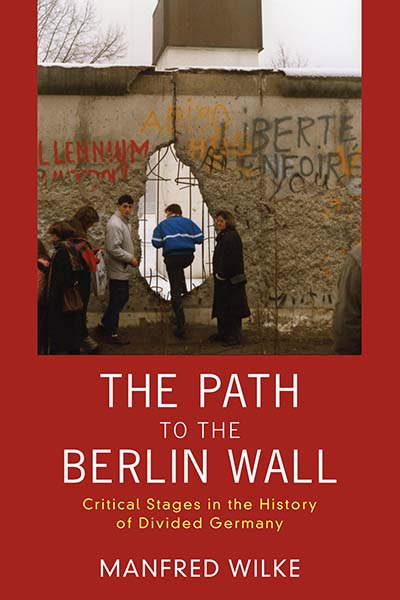 THE PATH TO THE BERLIN WALL
THE PATH TO THE BERLIN WALL
Critical Stages in the History of Divided Germany
Manfred Wilke
Translated from the German by Sophie Perl
The long path to the Berlin Wall began in 1945, when Josef Stalin instructed the Communist Party to take power in the Soviet occupation zone while the three Western allies secured their areas of influence. When Germany was split into separate states in 1949, Berlin remained divided into four sectors, with West Berlin surrounded by the GDR but lingering as a captivating showcase for Western values and goods. Following a failed Soviet attempt to expel the allies from West Berlin with a blockade in 1948–49, a second crisis ensued from 1958–61, during which the Soviet Union demanded once and for all the withdrawal of the Western powers and the transition of West Berlin to a “Free City.” Ultimately Nikita Khrushchev decided to close the border in hopes of halting the overwhelming exodus of East Germans into the West.
Tracing this path from a German perspective, Manfred Wilke draws on recently published conversations between Khrushchev and Walter Ulbricht, head of the East German state, in order to reconstruct the coordination process between these two leaders and the events that led to building the Berlin Wall.
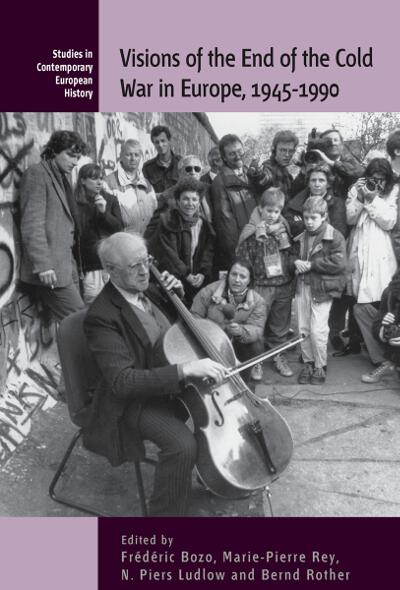 VISIONS OF THE END OF THE COLD WAR IN EUROPE, 1945-1990
VISIONS OF THE END OF THE COLD WAR IN EUROPE, 1945-1990
Edited by Frédéric Bozo, Marie-Pierre Rey, N. Piers Ludlow and Bernd Rother
Exploring the visions of the end of the Cold War that have been put forth since its inception until its actual ending, this volume brings to the fore the reflections, programmes, and strategies that were intended to call into question the bipolar system and replace it with alternative approaches or concepts. These visions were associated not only with prominent individuals, organized groups and civil societies, but were also connected to specific historical processes or events. They ranged from actual, thoroughly conceived programmes, to more blurred, utopian aspirations — or simply the belief that the Cold War had already, in effect, come to an end. Such visions reveal much about the contexts in which they were developed and shed light on crucial moments and phases of the Cold War.
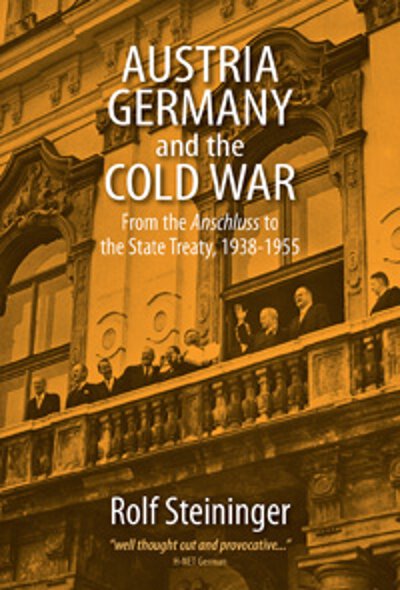 AUSTRIA, GERMANY, AND THE COLD WAR
AUSTRIA, GERMANY, AND THE COLD WAR
From the Anschluss to the State Treaty, 1938-1955
Rolf Steininger
In the ‘Moscow Declaration’ of 1943 the Allies officially propagated the notion of Austria as the first victim of Hitlerite aggression and announced their intention to set up a “free and independent Austria” after the war, which finally happened in 1955. By questioning why it took so long to get to this point, the author addresses issues such as the victim thesis, Austrians as perpetrators, Austrian anti-Semitism and official attempts to mitigate its effects after the war. He discusses the various proposals for post-war Austria and connects for the first time the issues of Anschluss, German question, Cold War, and the State Treaty. He makes it clear that the question of Austria was from the very beginning inextricably linked with the more important question of Germany.
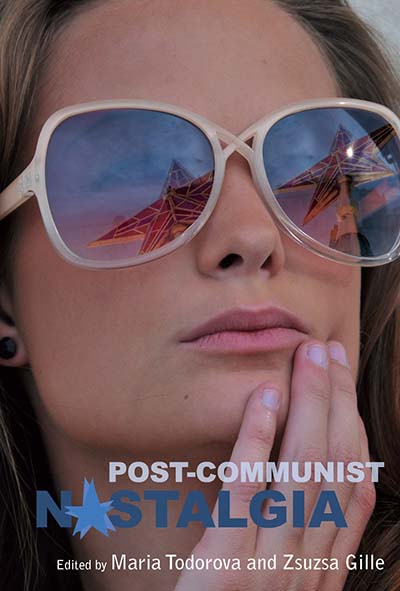 POST-COMMUNIST NOSTALGIA
POST-COMMUNIST NOSTALGIA
Edited by Maria Todorova and Zsuzsa Gille
Although the end of the Cold War was greeted with great enthusiasm by people in the East and the West, the ensuing social and especially economic changes did not always result in the hoped-for improvements in people’s lives. This led to widespread disillusionment that can be observed today all across Eastern Europe. Not simply a longing for security, stability, and prosperity, this nostalgia is also a sense of loss regarding a specific form of sociability. Even some of those who opposed communism express a desire to invest their new lives with renewed meaning and dignity. Among the younger generation, it surfaces as a tentative yet growing curiosity about the recent past. In this volume scholars from multiple disciplines explore the various fascinating aspects of this nostalgic turn by analyzing the impact of generational clusters, the rural-urban divide, gender differences, and political orientation. They argue persuasively that this nostalgia should not be seen as a wish to restore the past, as it has otherwise been understood, but instead it should be recognized as part of a more complex healing process and an attempt to come to terms both with the communist era as well as the new inequalities of the post-communist era.
————————————————
From Berghahn Journals:
German Politics and Society is a joint publication of the BMW Center for German and European Studies (of the Edmund A. Walsh School of Foreign Service, Georgetown University) and the German Academic Exchange Service (DAAD). These centers are represented by their directors on the journal’s Editorial Committee.
German Politics and Society is a peer-reviewed journal published and distributed by Berghahn Journals. It is the only American publication that explores issues in modern Germany from the combined perspectives of the social sciences, history, and cultural studies.
The journal provides a forum for critical analysis and debate about politics, history, film, literature, visual arts, and popular culture in contemporary Germany. Every issue includes contributions by renowned scholars commenting on recent books about Germany.
German Politics and Society is now available on JSTOR!
 Aspasia
Aspasia
The International Yearbook of Central, Eastern, and Southeastern European Women’s and Gender History
Aspasia is the international peer-reviewed annual of women’s and gender history of Central, Eastern, and Southeastern Europe (CESEE). It aims to transform European women’s and gender history by expanding comparative research on women and gender to all parts of Europe, creating a European history of women and gender that encompasses more than the traditional Western European perspective. Aspasia particularly emphasizes research that examines the ways in which gender intersects with other categories of social organization and advances work that explores transnational aspects of women’s and gender histories within, to, and from CESEE. The journal also provides an important outlet for the publication of articles by scholars working in CESEE itself. Its contributions cover a rich variety of topics and historical eras, as well as a wide range of methodologies and approaches to the history of women and gender.
Read the founding statement from the first issue of Aspasia here.

